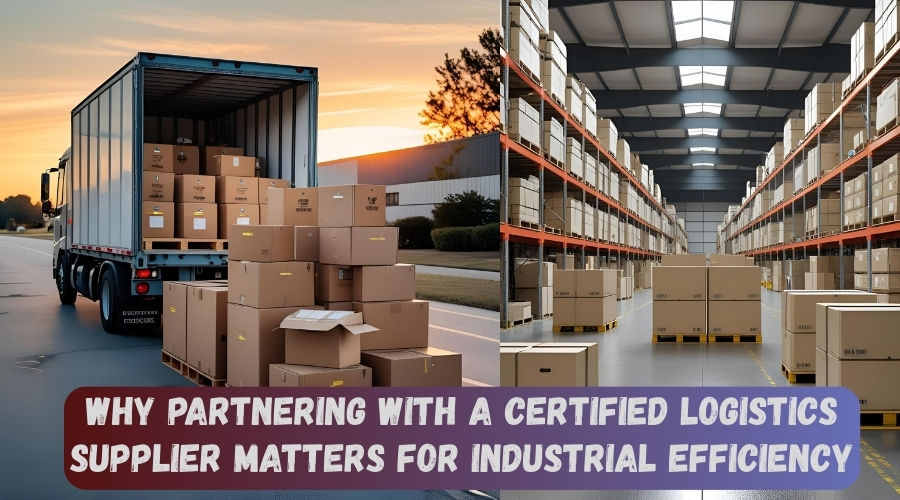Case Study: How a Global Logistics Equipment Provider Streamlined Distribution for a Retail Giant
- thautomate
- Jun 19
- 4 min read

Table of Contents
Introduction
The Retail Giant’s Distribution Challenge
About the Logistics Equipment Provider
Strategy: Assessing the Supply Chain Gaps
Key Logistics Equipment Solutions Implemented
Results: Metrics That Moved the Needle
Lessons Learned and Best Practices
The Role of a Logistics Equipment Manufacturer in Modern Retail
Final Thoughts
FAQs
1. Introduction
In today’s ultra-competitive retail environment, streamlined distribution isn’t a luxury—it’s a necessity. This case study explores how a global logistics equipment provider transformed the supply chain operations of a major North American retail chain, resulting in faster distribution, lower costs, and scalable growth. From outdated processes to efficient automation, the evolution was driven by data, precision, and modern logistics equipment.
2. The Retail Giant’s Distribution Challenge
The client, a top-5 U.S.-based retail chain with over 1,200 stores, struggled with an outdated distribution model. Key issues included delayed inventory turnover, poor warehouse space utilization, and excessive labor costs—leading to losses estimated at $35M annually.
Each distribution center operated independently, using mismatched systems and inconsistent storage equipment. Inefficiencies caused delays in seasonal stock rotation and return logistics. The client needed a partner who was more than just a logistics equipment supplier—they needed an end-to-end solution provider.
3. About the Logistics Equipment Provider
Our case study focuses on TransCore Industrial Solutions, a leading logistics equipment manufacturer and global supply chain optimization partner. With over 30 years of experience across Europe, Asia, and North America, TransCore offers a complete portfolio: from warehouse racking systems to automated conveyors, AS/RS (Automated Storage and Retrieval Systems), and IoT-enabled fleet management tools.
Key Stats:
Serves 22+ countries
7 manufacturing hubs worldwide
98% client retention rate
20% average operational cost savings per client
TransCore isn’t just a logistics equipment supplier—they operate as a long-term partner in end-to-end warehouse optimization.
4. Strategy: Assessing the Supply Chain Gaps
Phase 1: In-Depth Site Audit
TransCore conducted site audits at 10 regional distribution centers (RDCs) covering over 8 million sq. ft. of warehouse space. The audits assessed layout inefficiencies, travel time, outdated shelving, and bottlenecks in order picking.
Phase 2: Tech Stack Evaluation
They discovered that only 40% of the RDCs were using barcode-integrated inventory tracking. The others relied on manual log sheets, increasing error rates by 30%. IoT and sensor-based data tracking were non-existent.
Phase 3: Custom Solution Blueprint
TransCore developed a comprehensive blueprint incorporating custom-built logistics equipment, modular racking systems, and autonomous mobile robots (AMRs) to increase picking speed and order accuracy.
5. Key Logistics Equipment Solutions Implemented
1. Modular Racking Systems
TransCore replaced static shelving with smart, adjustable racking units that allowed vertical expansion, increasing warehouse capacity by 45%. These racks supported SKUs of different weights and sizes, allowing for dynamic storage and faster picking.
2. Automated Conveyor Belts
Heavy-volume items were routed via high-speed conveyor belts integrated with smart sorting sensors. These improved order fulfillment speed by 60% and reduced forklift dependency.
3. Autonomous Mobile Robots (AMRs)
AMRs were deployed to pick and transport light to medium-weight goods. Each robot was integrated with the WMS (Warehouse Management System) and reduced manual labor by 35%.
4. IoT-Enabled Inventory Tracking
RFID tags and IoT sensors were installed across 85% of SKUs. These allowed for real-time visibility, predictive restocking, and remote monitoring. Inventory mismatch errors dropped by 88% in 6 months.
6. Results: Metrics That Moved the Needle
Metric | Before Implementation | After TransCore Solutions |
Order Accuracy | 91.4% | 99.1% |
Inventory Turnover | 4.2x/year | 6.8x/year |
Warehouse Utilization | 62% | 90% |
Annual Distribution Cost | $135M | $105M |
Labor Cost/Order | $3.70 | $2.10 |
In just 10 months, the retail chain saw a $30 million reduction in logistics costs, improved customer delivery timelines by 28%, and recorded its highest customer satisfaction score (CSAT) in five years.
7. Lessons Learned and Best Practices
Integration Trumps Isolation
Don’t treat logistics equipment in silos. Integrate your logistics equipment manufacturer into the broader operational strategy to maximize ROI.
Modular Equipment = Scalable Growth
Choosing modular, adaptable equipment enables retailers to expand or contract based on seasonal or market demands—without incurring downtime.
Data-Driven Logistics
IoT and AI-powered logistics not only cut costs but also future-proof operations. Predictive analytics helped reduce overstocking and stockouts by 47%.
8. The Role of a Logistics Equipment Manufacturer in Modern Retail
Today, a logistics equipment provider isn’t just a hardware vendor. They must combine equipment design, warehouse engineering, data science, and systems integration into a cohesive solution.
This shift from a transactional to a transformational role means that successful logistics equipment suppliers must:
Offer product customization
Align with retail KPIs (speed, cost, sustainability)
Support lifecycle services: maintenance, upgrades, and consulting
Provide interoperability with WMS, ERP, and CRM tools
Retailers that partner with such providers gain a sustainable competitive advantage through speed, efficiency, and scalability.
9. Conclusion
This case study shows that choosing the right logistics equipment manufacturer can transform a legacy distribution network into a high-performance system. TransCore proved that with the right technology, people, and planning, it’s possible to achieve massive cost savings and boost operational agility at the same time.
For large retailers dealing with high SKU turnover, seasonal surges, and shrinking margins, the real differentiator isn’t just product quality—it’s logistics. And having the right logistics equipment provider is where transformation begins.
10. Frequently Asked Question (FAQ’s)
What is a logistics equipment provider?
A logistics equipment provider offers the tools, systems, and solutions necessary to optimize the movement, storage, and tracking of goods in a supply chain—ranging from shelving and conveyors to robotics and smart sensors.
How does a logistics equipment manufacturer differ from a supplier?
While a supplier may distribute ready-made products, a logistics equipment manufacturer designs, engineers, and often custom-builds solutions tailored to specific warehouse or distribution center needs.
Why is logistics equipment important for retail?
Efficient logistics equipment boosts warehouse performance, reduces costs, and speeds up order fulfillment—critical factors for retail success in an era of fast delivery expectations.
Can logistics equipment help with sustainability?
Yes. Modern logistics equipment often includes energy-efficient motors, recyclable materials, and smart inventory systems that reduce waste, overstocking, and carbon footprint.
What should I look for in a logistics equipment supplier?
Look for experience, global reach, customization options, integration support, and long-term service capabilities. The best suppliers also act as strategic partners in operational growth.



Comments